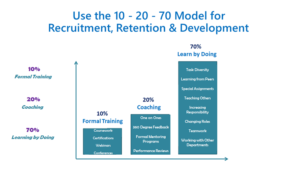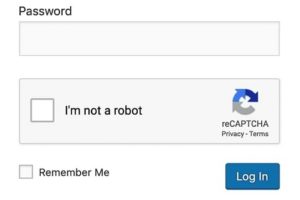The 70-20-10 model of leadership development was created in the 1980s by three researchers working at the Center for Creative Leadership in Greensboro, N.C. They were, Morgan McCall, Michael M. Lombardo, and Robert A. Eichinger. They were researching the key developmental experiences of successful managers. And it has been deployed with great results worldwide.
According to the model, three types of experiences are needed to grow leadership. It is weighted heavily towards On the Job Training (OJT) The breakdown is as follows:
> 70% challenging experiences, assignments (OJT)
> 20% developmental relationships
> 10% formal coursework and training
Examples of OJT include things like diversity of tasks, learning from superiors or peers, stretch assignments, department rotations, teaching others. And its sounds very good!
However in today’s labor market, unless upper management has the patience of Job, the
70-20-10 model of leadership development will be hard pressed to succeed. And here is why:
Until the labor market cycles, isn’t enough time to make 70-20-10 stick. New hires at all levels are doing more with less. Giving them development plans with more to do could backfire and actually create more of a dilemma.
This isn’t to say that development stretch assignments or additional responsibilities are a bad thing. They are very good things when staff are formally trained, assigned a coach or mentor, and turned loose on well-defined objectives.
Call me cynical if you want, but in HR we often hear the biggest reasons people quit their jobs are:
a) “I wasn’t trained well enough and felt uncomfortable making decisions in my role”,
b) “My reporting relationship had no idea of what my developmental goals were” and
c) “ I grew weary of the ‘corporate speak’, “Work smarter not harder” and “We are holding you
individually accountable” (for ill-defined objectives labeled as increased responsibilities?)
Nobody is looking to reduce staff in today’s market…are they? Isn’t it better to train role competencies up front and assign a retention coach before throwing them into deep end of the pool.
As competencies are necessary and time is short, a more simplified approach to development plans may be more practical. And in my view at present that is 10-20-70….vs 70-20-10.
What happens when an individual with limited competencies is placed in the 70% learning by doing mode…? Unless the organization is very patient with a large tolerance for mistakes, frustration results.
Don’t rush the 10% formal training or the 20% coaching segments as the current labor pool may have had very little training, feedback, or mentorship.
Here is a better sequence for times being what they are:

 Step 1 the 10% : Formal Training – I advocate for doing this first as it provides basis for future accountability and competency reviews. In today’s labor market this is a hot button. Its wise not to short cut this strategic step in the interest of transactional tasks. Hybrid is a good model, ie live in person and virtual (even for distributed workforces.)
Step 1 the 10% : Formal Training – I advocate for doing this first as it provides basis for future accountability and competency reviews. In today’s labor market this is a hot button. Its wise not to short cut this strategic step in the interest of transactional tasks. Hybrid is a good model, ie live in person and virtual (even for distributed workforces.)

Step 2: the 20% Coaching – The Manager as Coach has never been more important for hiring, retention and development. In 1:1 mode they must provide timely feedback and assess technical / relational EQ competencies within their scope of influence. They own it! This is huge for retaining star and future star people!
 Step 3 the 70% Learning by Doing – If we have done 10 and 20 well and in the right sequence, we have a good shot at growing and retaining a valuable leader or contributor with the aptitude and confidence to learn by doing. Turn them loose on new tasks, stretch assignments, rounding on other departments, teaching others etc.
Step 3 the 70% Learning by Doing – If we have done 10 and 20 well and in the right sequence, we have a good shot at growing and retaining a valuable leader or contributor with the aptitude and confidence to learn by doing. Turn them loose on new tasks, stretch assignments, rounding on other departments, teaching others etc.


